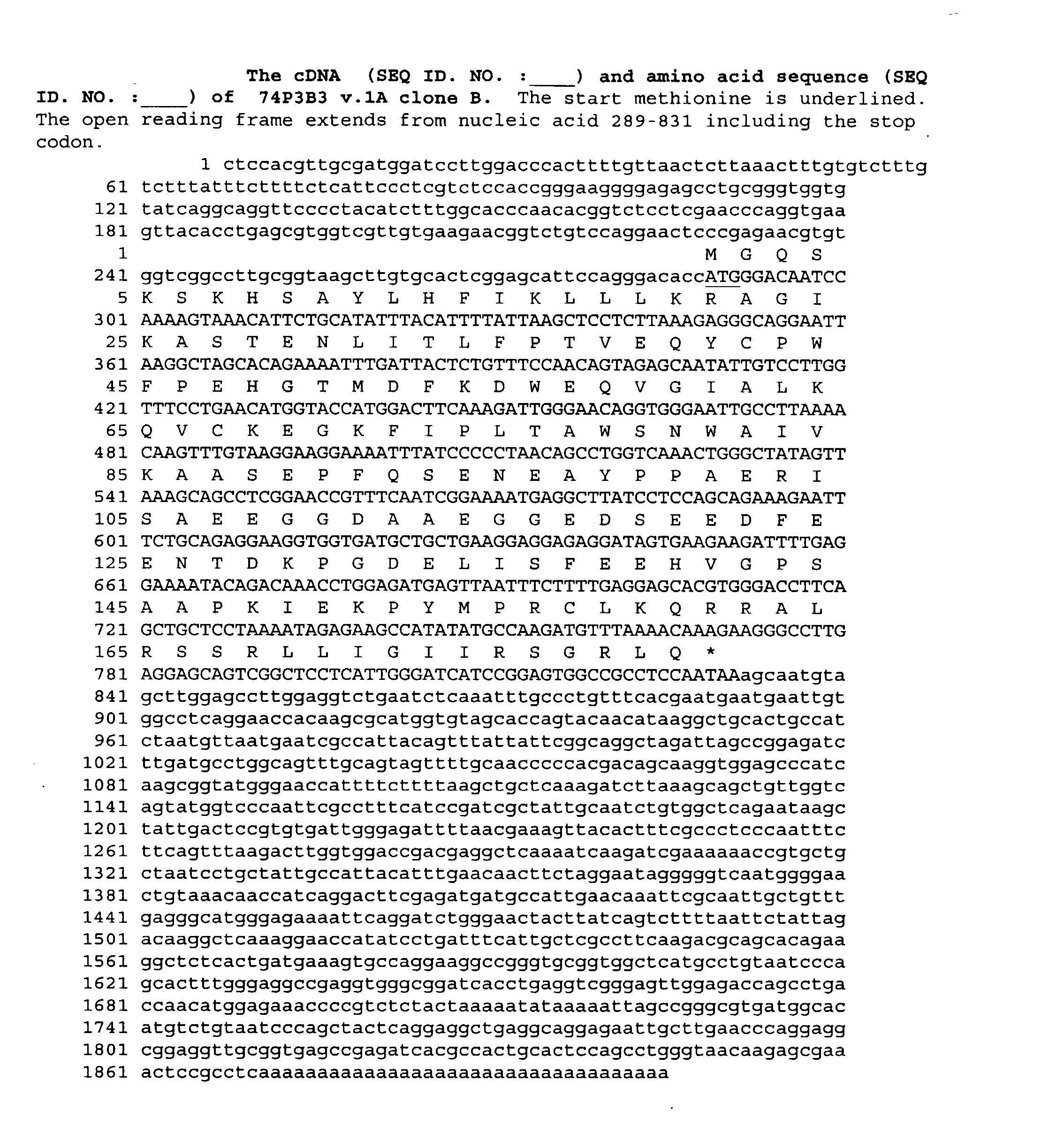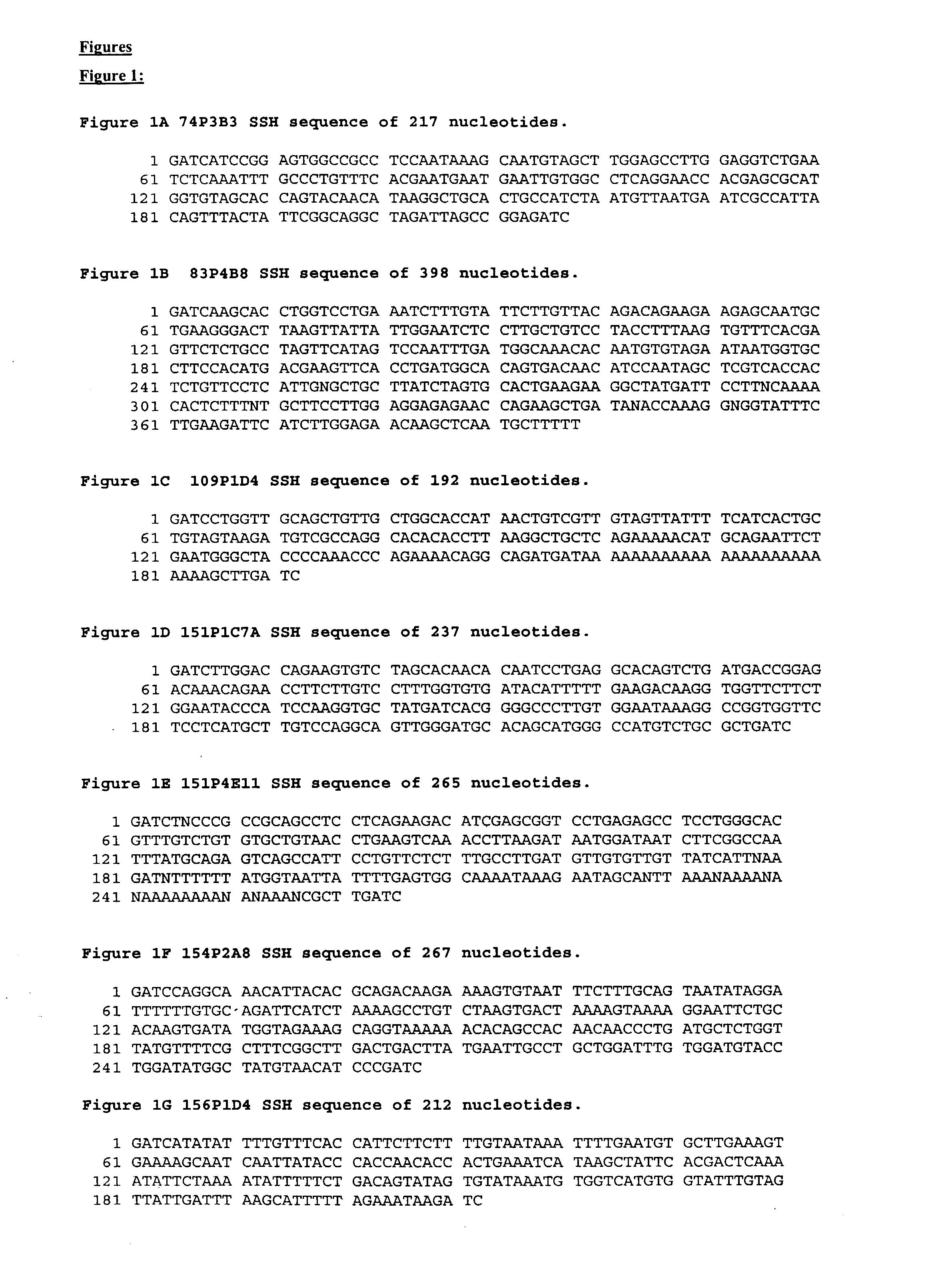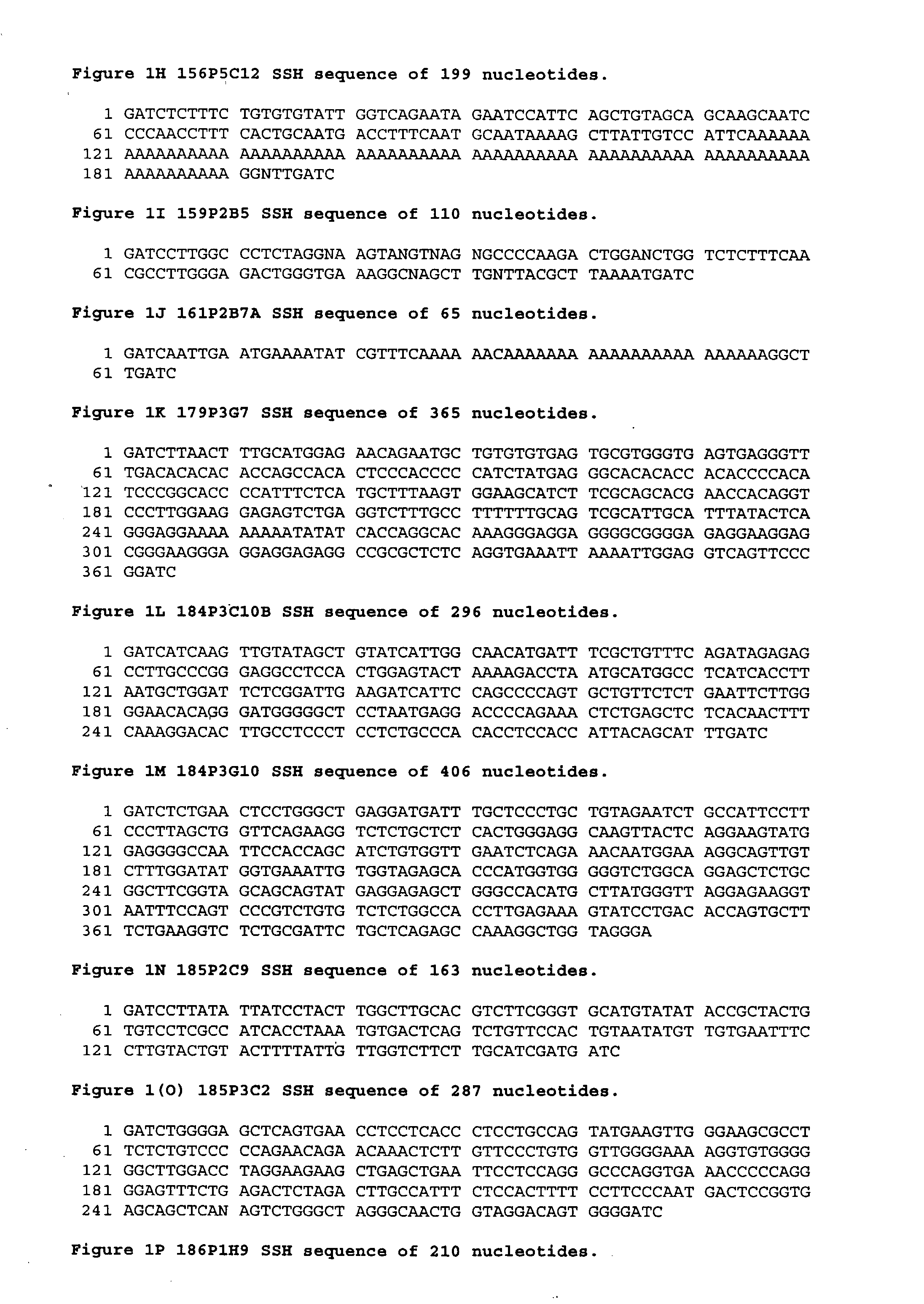Nucleic acids and corresponding proteins useful in the detection and treatment of various cancers
- Summary
- Abstract
- Description
- Claims
- Application Information
AI Technical Summary
Benefits of technology
Problems solved by technology
Method used
Image
Examples
example 1
SSH-Generated Isolation of a cDNA Fragment of the Target of the Invention Gene
[0487] The suppression subtractive hybridization (SSH) cDNA fragments shown in FIG. 1 were derived from many different subtractions utilizing LAPC xenografts in differing states of androgen dependence and / or castration as well as using cancer patient derived tissues. The cancer patient tissue SSHs utilized prostate, bladder, and kidney with tumors representing all stages and grades of the diseases. Information for additional sequences disclosed in FIG. 2 and FIG. 3 were derived from other clones and the use of various sequence databases.
Materials and Methods
LAPC Xenografts and Human Tissues:
[0488] LAPC xenografts were obtained from Dr. Charles Sawyers (UCLA) and generated as described (Klein et al, 1997, Nature Med. 3: 402-408; Craft et al., 1999, Cancer Res. 59: 5030-5036). Androgen dependent and independent LAPC xenografts were grown in male SCID mice and were passaged as small tissue chunks in rec...
example 2
Full Length Cloning of a Target of the Invention
[0499] Full length cDNA clones were isolated by a variety of methods known in the art. For example, cDNA phage libraries were constructed from normal and cancer tissues using methods based on those set forth in Current Protocols in Molecular Biology, Ed Ausubel et al., page 5.01. to 5.11.1, through supplement 52, Wiley and Sons; Molecular Cloning, 2nd Edition, Sambrook et al. Eds, pp. 8.2 to 8.45, 1989, Cold Spring Harbor Press) and full length cDNA clone isolated using probes derived from SSH clones and methods based on (Ausubel et al., supra, pp. 6.0.1 to 6.5.2; Sambrook et al. Eds, supra, 1989, pp. 8.46 to 8.86). In addition, some full length cDNAs were cloned using PCR with primers derived from the extreme ends of ORFs identified in ESTs assembled into contigs. The PCR product is subsequently cloned into pCR2.1 cloning vector (Invitrogen, Carlsbad, Calif.). Sequences of the cloned genes are listed in FIG. 2.
example 3
Chromosomal Mapping
[0500] Chromosomal localization can implicate genes in disease pathogenesis. Several chromosome mapping approaches are available including fluorescent in situ hybridization (FISH), human / hamster radiation hybrid (RH) panels (Walter et al., 1994; Nature Genetics 7:22; Research Genetics, Huntsville Ala.), human-rodent somatic cell hybrid panels such as is available from the Coriell Institute (Camden, N.J.), and genomic viewers utilizing BLAST homologies to sequenced and mapped genomic clones (NCBI, Bethesda, Md.).
[0501] Using FIG. 2 gene sequences and the NCBI BLAST tool: (see World Wide Web URL www.ncbi.nlm.nih.pov / genome / seq / page.cgi?F=HsBlast.html&&ORG=Hs), placed the genes of FIG. 2 to the chromosome locations listed in Table XXII.
[0502] Accordingly, as the human genes set forth in FIG. 2 map to the designated chromosomes, polynucleotides encoding different regions of the of FIG. 2 protein can be used to characterize cytogenetic abnormalities on a respective ...
PUM
| Property | Measurement | Unit |
|---|---|---|
| Magnetic field | aaaaa | aaaaa |
| Fraction | aaaaa | aaaaa |
| Digital information | aaaaa | aaaaa |
Abstract
Description
Claims
Application Information
 Login to View More
Login to View More - R&D
- Intellectual Property
- Life Sciences
- Materials
- Tech Scout
- Unparalleled Data Quality
- Higher Quality Content
- 60% Fewer Hallucinations
Browse by: Latest US Patents, China's latest patents, Technical Efficacy Thesaurus, Application Domain, Technology Topic, Popular Technical Reports.
© 2025 PatSnap. All rights reserved.Legal|Privacy policy|Modern Slavery Act Transparency Statement|Sitemap|About US| Contact US: help@patsnap.com



